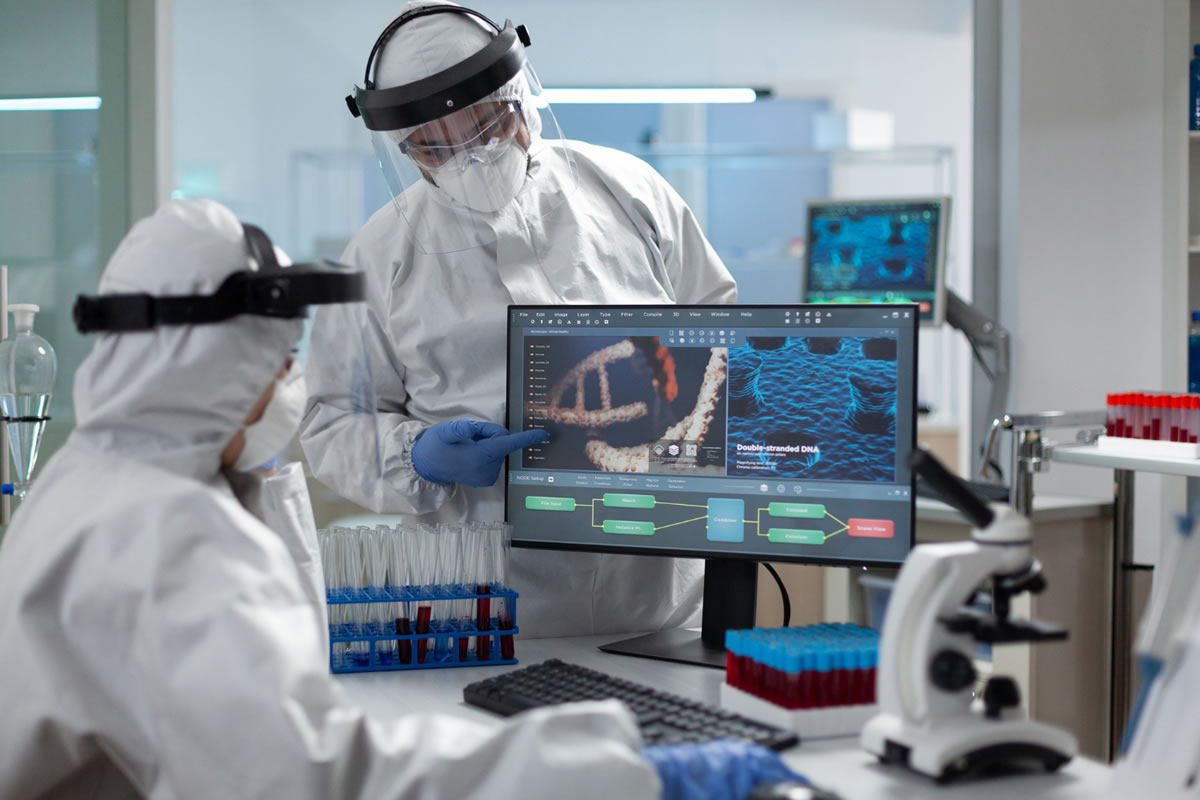An Overview of Lab Safety.

Laboratory safety is essential for protecting you and other lab members from accidents or injuries. Our experts on dermatopathology in Pittsburgh, PA, offer the following information on staying safe in the lab.
Plan your work
Before conducting any test or experiment, it is essential to assess any hazards related to the work you will be doing. You should always know things that might go wrong, how to deal with them, and what practices protection and equipment are necessary to minimize hazard exposure risk. It is also essential to be aware of any hazards from materials you will be using, like flammability, reactivity, corrosivity, and toxicity. Always read the material safety data sheets if you plan to use any chemicals. Be sure to keep essential personal protective equipment on hand. It may be helpful to post a sign on the door listing emergency contact numbers and notifying other lab users of any hazards.
Inspect apparatus and equipment for damage, cracks, or weakness before beginning your work. Inspect cords and electrical equipment for damage or frayed wiring before use and repair or discard any damaged equipment. Follow every safety procedure. When working with chemicals, always wear eye protection like chemical splash goggles. Wear a face shield big enough to protect your neck and ears as well as your face when pouring large amounts of hazardous chemicals, in addition to wearing goggles. When handling chemicals, always wear gloves. You should select the glove material based on compatibility with any chemicals you may come in contact with. Finally, always wear appropriate clothing like aprons or chemically resistant lab coats. Do not wear mini skirts, shorts, or anything that would leave bare legs unprotected. Never wear open-toed or open-heeled shoes, high-heeled shoes, or any shoes made with woven materials. Keep loose clothing and long hair confined.
If you are alone in the laboratory, never work with hazardous processes or chemicals. Always ensure adequate ventilation or use a chemical fume hood when working with chemicals. Never allow toxic substances to be released in warm rooms or cold rooms because these areas have recirculated contained air. Only use chemicals for their intended purpose and as directed. Never use your mouth to siphon or fill a pipette. Instead, use pipette bulbs or other suitable devices. Handle syringes, needles, and other sharps carefully. Whenever possible, use needless systems or self sheathing needles. Use an appropriate sharps container for the disposal of all sharps. Never use the drain to dispose of chemicals. Most lab chemicals require removal as hazardous waste. Secure compressed gas cylinders to prevent them from falling over, and when the regulator is removed or not in use, cylinders must be capped. Inspect the laboratory weekly for hazardous conditions and wrap or shield evacuated or pressurized equipment.
Know emergency procedures
Know how to use emergency showers and eyewashes and where they are located. In case of emergency, be aware of at least two laboratory exits. If an emergency arises, pull the nearest pull box, evacuate the lab area, and close all the doors.
Practice good personal hygiene and housekeeping
Avoid any direct contact with chemicals. Never taste, inhale, or smell lab chemicals. Always wash your arms and hands with water and soap after removing your gloves and before exiting your work area. Never chew gum or tobacco, drink, eat, apply cosmetics, or smoke in lab areas. Use tongs or other mechanical devices to pick up broken glass. Never use your hands. Remove PPE, like lab coats and gloves, before leaving the laboratory. Remove your gloves before handling everyday items like instruments, doorknobs, and phones. Keep your work area uncluttered and clean. Wipe down lab benches with disinfectants and cleaners regularly. Never block emergency eyewash stations, showers, hallways, or exits.
Safely transport chemicals
Use secondary containers like plastic totes or acid buckets secured on carts. Always wear appropriate PPE and limit access to passenger elevators or use freight elevators. When moving compressed gas cylinders, use the hand truck with a safety chain.
Leaving operations unattended.
Ensure accessible material containment in the event of failures or spills. In addition, label all process equipment and containers and post emergency contact numbers on the lab door. Finally, leave the lights on in the lab.
Report dangerous situations or activities
Report every accident, no matter how minor. Never perform unauthorized experiments, preparations, or work, and avoid engaging in pranks, horseplay, or other mischievous acts in the lab. Also, never remove facility chemicals without prior authorization. Finally, report suspicious activities or people to the police.
Call us today for more information on dermatopathology in Pittsburgh, PA.
Contact
Location
440 William Pitt Way
Pittsburgh, PA 15238
OFFICE HOURS
Monday-Friday: 8am-5pm
Saturday & Sunday: Closed
PHONE & FAX
(800) 786-3054 - Toll Free
(412) 968-9266 - Local
(412) 968-5673 - Fax
